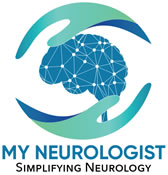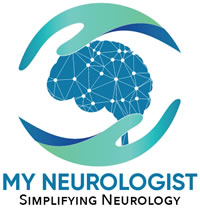Stiff Person Syndrome (SPS)
What is Stiff Person Syndrome (SPS)?
This is a neurological condition resulting in different muscles getting stiff or rigid and cramping due to an underlying autoimmune disorder. It was first described in 1950s as Stiff Man Syndrome.
What is the defect in SPS?
SPS is considered an autoimmune disease of GABA receptor system, because of following findings:
- Defective GABA neurotransmission activity. GABA is an inhibitory neurotransmitter and without its full activity muscles contract when they should be relaxed. For example, when we bend our elbow by contracting the biceps muscle, the opposing triceps muscle should be relaxed. With defective GABA system, both biceps and triceps may contract resulting in rigidity.
- High level of antibodies against GAD (glutamic acid decarboxylase), which is a necessary enzyme for GABA synthesis, in serum and CSF. Exact relationship of these antibodies to the disease is not well known.
- Low levels of GABA in CSF.
- Improvement of symptoms with GABA promoting drugs like diazepam.
- Improvement of condition with immune therapy.
What are symptoms of SPS?
- Muscles stiffness. Most commonly, leg and trunk muscles, or muscles closer to the body are involved, including abdominal and back muscles.
- Changed body posture, called hyper lordosis, due to back muscle stiffness.
- Difficulty turning or bending resulting in frozen or statue like appearance and falling.
- Difficulty walking.
- Painful and distorted toe formation with claw-toe appearance.
- Painful muscle spasms, which can be triggered by anxiety, or any stimulus resulting in emotional response, like the startle response. It may result in freezing in the middle of walking.
- Status spasticus: This is severe painful muscle stiffness and spasms affecting multiple areas including chest, which may result in difficulty breathing or speaking. It may become an emergency requiring urgent treatment.
- Stiffness and spasms may be localized: In these cases, stiffness affects a localized area of body such as face, or one limb.
- Difficulty speaking.
- Difficulty swallowing.
- Phobias, resulting from possibility of freezing or falling.
What are signs of SPS?
Following signs may be present:
- Muscle rigidity or stiffness, especially of opposing muscles simultaneously.
- Abnormal posture, such hyper lordosis or claw-toe foot appearance.
- Decreased facial expressions, or stiff face syndrome.
How is SPS diagnosed?
- Clinical history and examination, though there is no specific examination finding.
- Electromyogram may reveal continuous muscle activity even at complete rest.
- Very high GAD (glutamic acid decarboxylase) antibody level in serum.
- High GAD antibody level in CSF (cerebrospinal fluid).
- The criterion of response to treatment with diazepam is not reliable.
What is SPS spectrum disorder?
Many patients have other conditions associated with SPS. Their condition is described as SPS spectrum disorder. Some of those conditions are:
- Cerebellar ataxia, without cerebellar disease or atrophy noted on imaging.
- Epilepsy, especially if induced by listening to music.
- Limbic encephalitis.
- Progressive encephalomyelitis with rigidity and myoclonus.
- Nystagmus and abnormal eye movements.
- Type I diabetes.
- Pernicious anemia.
- Celiac disease.
How is SPS treated?
- GABA agonists
- Receptor binding drugs: Benzodiazepines
- Centrally acting: Baclofen, gabapentin, levetiracetam, vigabatrin.
- Alpha2-adrenergic agonists
- Tizanidine
- Others: Cyclobenzaprine, dantrolene, methocarbamol, Botox.
- Immune therapy
- IV Ig 2g/kg per month. This treatment needs to be evaluated on regular basis to justify its long-term use. It may be better to adjust the dose and frequency of treatment based upon objective evidence, on a case-to-case basis.
- If IV Ig was not effective or not an option, rituximab may be an option.
- Plasma exchange may also be an option in selective cases, especially in urgent situations like status spasticus.
- Others: Steroids for long-term use are not recommended especially because of its tendency to cause diabetes and lack of efficacy. Not enough evidence is there to consider azathioprine, methotrexate, cyclophosphamide, mycophenolate, or tacrolimus. On the other hand, analogous stem cell transplantation may have some benefit.
Is SPS a genetic disorder?
SPS is not considered a genetic disorder. With that said, certain genetic factors may contribute to it.
Can I give SPS to my partner?
SPS is not a communicable disease and not transmitted in that manner.
Where can I get more information about SPS?
American Academy of Neurology
NORD Rare Diseases – National Organization for Rare Disorders


Leave a Reply
Your email is safe with us.
You must be logged in to post a comment.